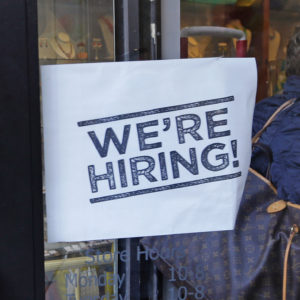The states with the lowest unemployment rates tend to have populations that identify as Republican, according to federal data released Friday.
The Bureau of Labor Statistics (BLS) looks at unemployment in each state on a monthly basis. Most of the states with the lowest unemployment rates have populations that identify as Republican. American Enterprise Institute Scholar Mark Perry notes it’s likely due to those states pursuing more business-friendly policies.
“Job growth and jobless rates reflect the business climate in the state,” Perry told InsideSources. “That would include right-to-work but also taxes and regulations and things like that, and it’s often the case that states, let’s say Texas, are known for being more business friendly.”
The BLS report did not look at the political makeup of the states. Nevertheless, seven of the 11 states with the lowest unemployment rates lean Republican based on a February report from Gallup. New Hampshire and South Dakota, for example, have the lowest unemployment rates at 2.9 percent and are both Republican.
Not all Republican states, however, have low unemployment rates and not all Democratic states have high rates. Three Democratic states can be found in the top 11. When all states are averaged, Republicans hold only slightly better numbers at 4.5 percent compared to 5.0 percent for Democrats.
Brookings Institution Economist Gary Burtless notes that the bigger difference is the population sizes of the states. Republican states tend to be more rural and have vastly smaller population sizes compared to Democratic states. Republican states have the better unemployment rates but more people are working in Democratic states.
“Democrat states are so much bigger as you rank them by their labor force in September,” Burtless told InsideSources. “The most notable thing is just how bigger the Democratic states are. They’re just vastly bigger states.”
The unemployment rate is just one of many indicators that determine the overall economic health of a state. Additionally, state-based populations don’t always reflect their governing structure. A state governor or its legislature could be composed of a party that differs from what the majority of people associate with.
“The unemployment rate is just one indicator of a state’s economic health, and the factors that affect state economies are years in the making and only partially affected by political decisions,” Economic Policy Institute Media Relations Director Dan Crawford told InsideSources. “And it’s not always the case that the way a state’s party affiliation corresponds with control of the statehouse or governorship.”
There are states with Republican and Democratic populations that have unemployment rates at or below the national average of 5.0 percent. The states with the worst unemployment rates tend to be those with large populations of independent voters.
“You average both the Democrat-leaning states and the Republican-leaning states, and they have a lower unemployment rate,” Burtless said. “So the most partisan states, both have a lower unemployment than the national average so the other 30 states must have more unemployment.”

